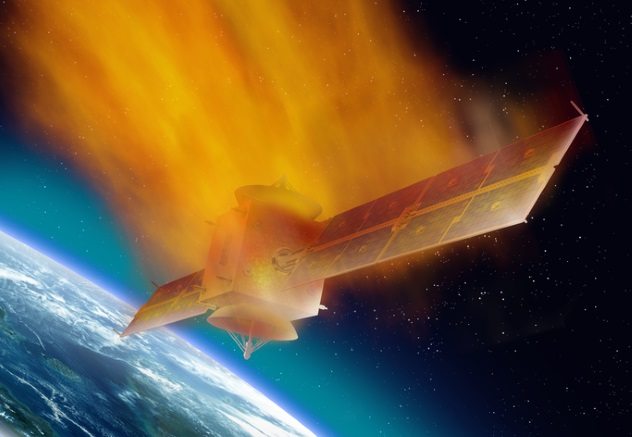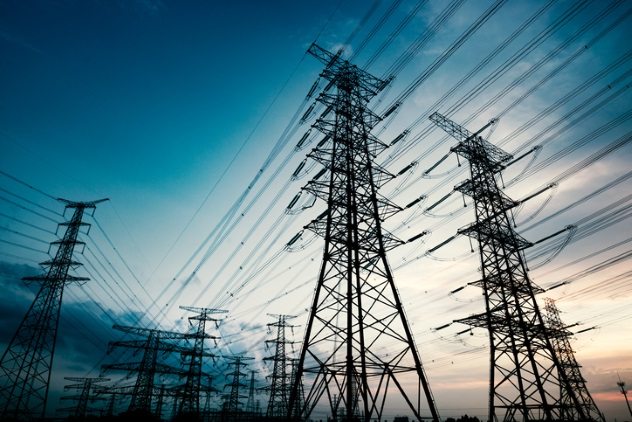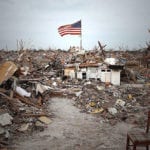 Technology
Technology  Technology
Technology  Movies and TV
Movies and TV 10 Film Shoots That Almost Ended in Disaster
 Politics
Politics The 10 Most Bizarre Presidential Elections in Human History
 Weird Stuff
Weird Stuff 10 Eggs-traordinarily Odd Eggs
 History
History 10 Desperate Last Stands That Ended in Victory
 Animals
Animals Ten Times It Rained Animals (Yes, Animals)
 Mysteries
Mysteries 10 Devastating Missing Child Cases That Remain Unsolved
 Creepy
Creepy 10 Scary Tales from the Middle Ages That’ll Keep You up at Night
 Humans
Humans 10 One-of-a-kind People the World Said Goodbye to in July 2024
 Movies and TV
Movies and TV 10 Holiday Movies Released at Odd Times of the Year
 Technology
Technology Making 10 Common Products from Very Unusual Sources
 Movies and TV
Movies and TV 10 Film Shoots That Almost Ended in Disaster
 Politics
Politics The 10 Most Bizarre Presidential Elections in Human History
Who's Behind Listverse?

Jamie Frater
Head Editor
Jamie founded Listverse due to an insatiable desire to share fascinating, obscure, and bizarre facts. He has been a guest speaker on numerous national radio and television stations and is a five time published author.
More About Us Weird Stuff
Weird Stuff 10 Eggs-traordinarily Odd Eggs
 History
History 10 Desperate Last Stands That Ended in Victory
 Animals
Animals Ten Times It Rained Animals (Yes, Animals)
 Mysteries
Mysteries 10 Devastating Missing Child Cases That Remain Unsolved
 Creepy
Creepy 10 Scary Tales from the Middle Ages That’ll Keep You up at Night
 Humans
Humans 10 One-of-a-kind People the World Said Goodbye to in July 2024
 Movies and TV
Movies and TV 10 Holiday Movies Released at Odd Times of the Year
10 Potential Solar Storm Disasters
In September 1859, the Earth was struck by an awe-inspiring coronal mass ejection (CME). Astronomers observed a brilliantly bright white flare emerging from the Sun, and auroras were seen as far south as Cuba and Jamaica.[1] This massive solar event wreaked havoc on electrical equipment across the world; telegraph wires burned off their poles, streams of fire poured forth from electrical circuits, and telegraph lines remained operative even with the batteries disconnected.
Today, electronics are more prevalent than they were in 1859 by many orders of magnitude. Almost every home in the developed world is connected to an electrical grid, billions of people rely on satellites for communication, and vital supply lines depend on electricity to operate. It’s been estimated that an EMP attack on the United States would utterly obliterate the American energy grid and starve 90 percent of the US population. The effects of an EMP blast are similar to those of a CME, except that a powerful enough solar flare would disable the entire planet.
How many of us are truly ready for such an event to occur? How would society and culture be affected in the long term if the Earth was hit by an electromagnetic blast like the solar storm that narrowly missed us in 2012? If all of our electronic conveniences were destroyed in the blink of an eye, modern civilization would be exposed to be as flimsy as a tinfoil hat.
Here are ten disasters that would befall mankind if a merciless storm were to descend from the Sun.
10 Knockout Of Telecom Satellites

With proper warning, communications satellites can be turned off before a solar storm hits the Earth. But the first stage of a CME slams into the Earth at the speed of light, leaving little time to prepare.[2] In this initial stage, electromagnetic radiation would block satellite signals by altering the composition of the atmosphere. With communications knocked out, it would be impossible to prepare satellites for the next stage of a solar storm. Most communications satellites wouldn’t survive the bombardment of high-speed charged particles that follows closely on the heels of the initial blast of radiation.
Military forces around the world rely on satellites for communication. Millions of monetary transactions are processed by satellites every day. People in rural areas require satellites to connect to the world, and pilots use satellites to navigate airplanes. If the second stage of a CME were to knock out the global satellite communication system, it could take weeks or months to bring this network back online. But with the third stage of a solar storm already on its way, it would still be far too soon to begin planning repairs.
9 Dead Astronauts

From space, a coronal mass ejection would be strikingly beautiful. The beginning of this calamitous event would be heralded by a brilliant flash of white light. But astronauts engaged in extravehicular activities (EVAs) would have no time to take in the splendor of the moment. Caught in the inky void in nothing but their space suits, astronauts would be fried alive by the charged particles that arrive only minutes after the initial flash.[3]
If an extravehicular astronaut managed to get inside the airlock in time, they would be momentarily safe from the effects of the oncoming solar storm. Spacecraft are equipped with heavy shielding to protect their occupants from cosmic radiation, and the charged particles raining forth from the Sun would roll off the hull like raindrops.
But with satellites knocked out, astronauts in space would have no way of calling home. They would be dead in the water with nothing to do but await the final onslaught.
8 Destruction Of Electrical Grids

While the first two stages of a massive solar storm are bad enough, the third and final stage of a CME dwarfs its precursors in terms of sheer destructive potential. Long after the radiation and charged particles associated with a CME have already made landfall on the Earth’s electromagnetic shores, an enormous cloud of gas and plasma would still be lumbering inexorably toward us at millions of miles per hour.
The atmosphere protects us from being directly affected by a CME. But all Hell would break loose on the surface of the planet upon contact of this miasma of expelled solar matter with the Earth’s magnetosphere. Power transformers would explode all over the world, instantly plunging millions into darkness. Power lines would sag and snap, and regional communications systems would fail.[4] In the case of a powerful enough solar storm, every single electronic device in the world could be destroyed instantaneously.
The planet would be without power, and masses of people who have been taught for generations to rely on electronics and depend on the system would suddenly be deprived of sustenance and direction.
7 Shutdown Of Medical Facilities

Those in hospitals and medical clinics would be among the first to feel the brunt of a sustained power outage. Most hospitals are equipped with emergency generators to keep the lights on when the power goes off.[5] But these generators are rarely capable of supplying the full electrical load of a modern hospital, and even the most paranoid hospital administrators only expect the power grid to be inoperable for a few days at most.
If a coronal mass ejection were to wipe out the electrical grid of an entire region or nation, however, it could take weeks or even months to get current flowing through the lines once again. With fuel for emergency generators being a limited commodity even in the best of times, it would soon be lights out for hospital patients around the world. For many patients, the lights would never come on again.
6 Crippling Of Supply Lines

Without electricity, gas pumps are inoperable. Some gas stations have prepared for emergencies by storing extra gasoline on hand and investing in backup power generators.[6] But eventually, gas station owners would have to make the impossible choice between using gasoline or diesel to keep their generators going and supplying fuel to those in need. If a solar storm were to knock out the power grid for any longer than a few days, drivers would have to run the risk of being shot while prying open manhole covers at gas stations in order to fuel up their vehicles.
Without diesel, supply trucks would be useless. Without jet fuel, airmail services would be shut down. People would have to wait quite a bit longer than two days to receive their Amazon Prime orders, and the shelves of grocery stores would quickly start looking bare.
5 Mass Starvation

The average person has no idea how to fend for themselves in a real disaster situation. Even those with a temperament suitable for such a feat have rarely amassed the means to achieve off-the-grid survival for an extended period of time. As soon as credit cards stop working, cash becomes meaningless, and the local supermarket runs out of frozen meals, millions of people would start starving.
Despite human encroachment upon a shrinking wilderness, the bounty of nature remains waiting to be tapped. Yet most people don’t have the wherewithal to grub for roots all day in the rain, and many countries around the world have stigmatized gun ownership and denied their citizens the right to bear arms capable of reliably harvesting meat.[7]
Whether licitly or illicitly, plenty of people in cities are, however, well-armed. In the event of a sustained supply line disruption, these people would band together to acquire sustenance one way or another.
4 Lawlessness

People in rural areas would be better off than most if a solar storm resulted in a sustained power outage. Country folk usually supply at least some of their own food and haven’t forgotten the ways of the past as rapidly as city dwellers. But the ability of these rustic farmers and herdsmen to fend for themselves would be put to the test the moment that armed gangs from the cities start heading down every gravel driveway in search of food and loot.
In the summer of 1977, the lights went out in all five boroughs of New York City for over 24 hours.[8] Lawlessness broke out, and when the lights came back on, a dismal scene of broken shop windows and refuse-ridden streets met the eyes of millions of weary New Yorkers. Given a few more days, the gangs of looters that roamed the city in 1977 would have taken everything of value and moved on.
Hardened by the experience of emptying the world’s cities of their valuables and consumables, like a cloud of locusts, the opportunists of a solar storm would soon set their sights on rural communities. At least in America, however, these human pests might find that they’ve bitten off a bit more than they can chew.
3 Critical Data Loss Worldwide

Over the years, more and more information has become digitized. In the past, researchers were forced to trawl through the contents of libraries or go directly to the source in order to acquire the data they were looking for. These days, we have come to rely on the Internet as a comprehensive compendium of all knowledge that is worth knowing.
The precursor to the Internet, ARPANET, was designed to be capable of withstanding the widespread destruction of a nuclear war.[9] But the creators of this rudimentary packet-switching network could never have envisioned the massive diversification of today’s Internet systems. Far from a military-controlled network transferring a few kilobytes of data per day at the most, the modern Internet is operated largely under the private control of a vast array of corporate and nonprofit entities.
Not only would a massive CME take down millions of phone and cable lines that serve as carriers for Internet signals, but a powerful solar storm could also fry servers in critical data centers. If, for instance, Google or Wikipedia’s servers were destroyed, it wouldn’t be much consolation to reconnect to the Internet after our long time in the dark.
Though physical records still exist of the knowledge that mankind has amassed throughout the centuries, it wouldn’t take long for books to become fuel for fires instead of the mind if a power outage lasted more than a week. If a strong enough CME were to strike the Earth, the slate of human history could potentially be wiped clean.
2 Social Reset

Recovering from the destruction of the American energy grid could cost as much as $2 trillion.[10] But the potential social costs of a worldwide electrical shutdown are nearly unfathomable.
Without the media to tell us what to do, money to keep us focused, and amenities to keep us pacified, society would decay at a rapid rate. The strong would survive, and the weak would perish. Those who made it through alive would be invigorated and irrevocably changed by the experience.
If the dull chaos of our world came crashing down, those who survived would be incapable of returning to the old world even if it were magically resurrected. They would be ready for something new.
After the cataclysm, truths which have been obscured could be divulged. Technologies that have been suppressed could be revealed. The remnants of humanity would band together, remade by the experience of watching the world end.
1 Effects On The Human Electromagnetic Field

Though most don’t contain any electronic components, human bodies are also connected to the Earth’s magnetic field. An electromagnetic aura surrounds the human body, and the nervous system carries signals with electricity. In 2014, a scientific study suggested that the risk of stroke increases during geomagnetic storms,[11] and the potential effects of a powerful solar storm on the human body don’t end there.
Researchers have pointed out that dozens of ancient cultures believed that a massive solar event would propel humanity into an evolved stage of consciousness. Many of these cultures refer to this event as a “solar flash” and predict that those who survive this event will ascend into a state of being in which the hidden mysteries of the mind, such as telepathy, psychokinesis, and levitation, are unleashed on a massive scale.
Read about more cosmic cataclysms on Top 10 Ways Space Could Destroy Civilization As We Know It and 10 Violent Events That Will Hit Our Solar System.






